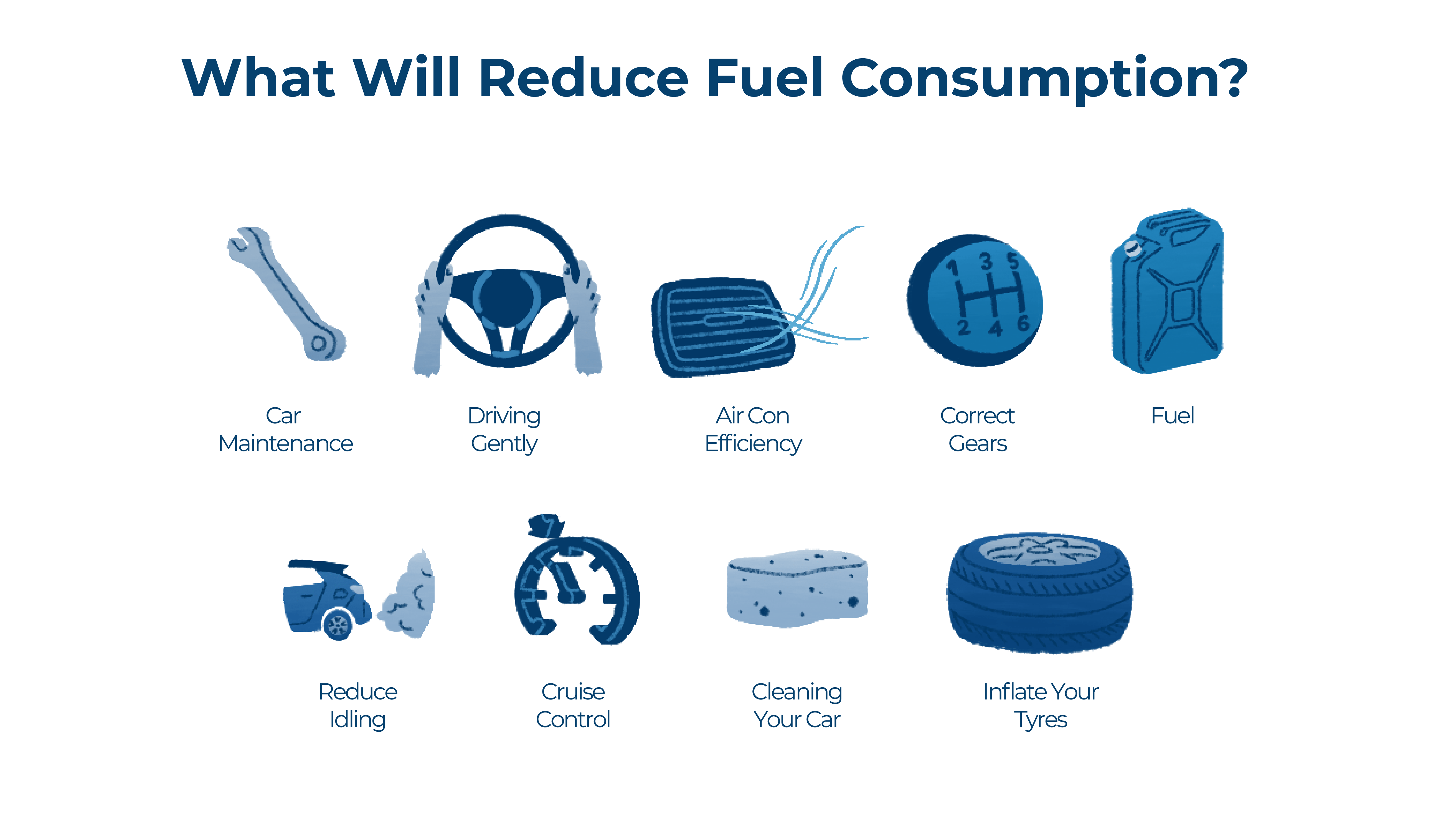Looking for ways to improve your car’s fuel economy?
Fuel efficiency measures how far your car can travel with a certain amount of fuel.
By adopting the fuel-efficient driving habits mentioned in this blog, you can help to reduce your vehicle’s fuel consumption.
Page Contents
What Will Reduce Fuel Consumption?
There are several things you can do to reduce your car’s fuel consumption.

Invest in Car Maintenance
Regular car servicing ensures that your vehicle’s essential components are in optimal condition.
By investing in preventative maintenance of the engine, tyres and filters, you can enjoy a better fuel economy overall.
Drive Gently
Braking and accelerating gently can help you to get better miles per gallon (MPG).
Your engine will use less fuel when it is revolving slower, at a lower revolution per minute (RPM).
Avoiding excessive idling or driving at high speeds can also significantly improve fuel efficiency.
Due to tyre-rolling and air resistance, driving at high speeds will increase your fuel consumption.
If you are approaching a speed bump, try not to accelerate quickly or slam on the brakes to go over the bump.
It is better to maintain a constant speed of around 15 to 20mph – unless your car is especially low or the bumps are high.
It also helps to plan your journeys in advance and pick the best possible routes so you don't waste fuel unnecessarily.
Use Air Con Effectively
The energy needed for the compressor in your car’s air con system to operate can increase your fuel consumption.
You should wait until the air con system has suitably cooled your car, then begin to gradually decrease the flow rate, adjust the temperature or turn the AC off.
Use the Right Gears
Be sure to use the right gear to maximise fuel efficiency.
Don’t choose a gear that is too low for the current speed or terrain.
For petrol vehicles, the most economical operating range is between 1500 and 2500 RPM.
You should shift up to the next gear when you exceed this upper limit.
For diesel vehicles, the range is usually between 1300 and 2000 RPM.
Fill Up Only the Fuel You Need
Fuel is heavy, and a full tank may be contributing to excess weight that your vehicle is having to carry around.
Likewise, driving with too little fuel can cause damage to vital components like the catalytic converter.
Consider topping your car’s fuel tank up half way, and be sure to fill up before the warning light comes on.
Minimise Idling
Leaving the engine running whilst your car is stationary is known as idling.
This means that fuel is being consumed even though your vehicle isn’t in motion.
To save fuel, you should switch off the engine when you’re waiting for someone or trying to defrost the vehicle.
If you have a modern car, then it may be equipped with ‘stop/start’ technology which will automatically shut off the engine when the car is stationary.
Only Use Cruise Control on the Motorway
Did you know that cruise control only helps fuel economy when you drive on a consistently flat surface?
That’s why it is best to save cruise control for the motorway, where you should drive at a constant speed in top gear to use up minimal fuel.
Clean Out Your Car
Not only will giving your car a proper clean make it look great, but this can also have a positive impact on fuel economy, too.
Clear out the boot and backseat of any items you’re not using regularly.
Removing the roof rack and any other items you don't need can help to reduce fuel efficiency.
Properly Inflate Your Tyres
Both overinflated and underinflated tyres can have a negative impact on fuel economy.
Remember, tyre pressures will vary depending on the load you’re carrying.
Make sure that you inflate your tyres to the correct tyre pressure listed in your vehicle’s owner’s manual.
What Increases Fuel Consumption?
Aggressive driving, poor vehicle maintenance and under-inflated tyres can all lead to an increase in fuel consumption.
As can driving at high speeds, in heavy traffic or uphill, as the engine will have to work harder to keep up.
When Is Fuel Consumption at Its Highest?
Fuel consumption tends to be at its highest in cold weather, stop-and-go traffic and whilst driving at high speeds.








No comments yet
Leave a comment